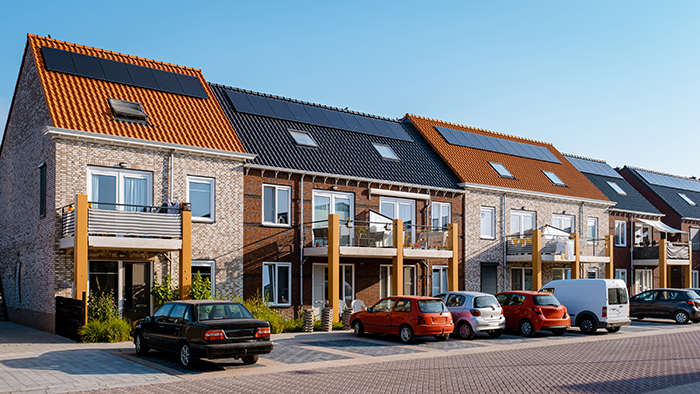With the gradual clarification of distributed solar panels policies, the household photovoltaic industry is ushering in a new historical node and facing unprecedented challenges and opportunities. The policy requires that by 2030, all distributed photovoltaic, including household photovoltaic, must fully participate in market transactions. This policy change not only reshapes the industry landscape, but also lays the foundation for future development.
Challenges: Market wait-and-see and capacity constraints
Although the newly installed capacity of household photovoltaic reached nearly 16GW in the first half of this year, the growth has declined compared with the 21GW data in the same period last year. This trend is mainly attributed to the cautious attitude of major investors such as central state-owned enterprises, local state-owned enterprises and financial institutions towards household solar panels assets, which has led to a slowdown in the expansion of mainstream market companies. In addition, transformer capacity restrictions are also a practical problem that restricts the development of household solar panels. However, from a national perspective, the cumulative number of household photovoltaic systems installed is only about 5 million sets, and the installed capacity ratio is still less than 10% compared with the market potential of 80 million sets, which shows that the market space is still huge and the potential has yet to be tapped.
Opportunities: Policy support and market potential
Despite the challenges, the future of the household photovoltaic industry is still full of opportunities. First, the clear direction of the policy provides stable expectations for the industry. Household photovoltaic for natural persons will enjoy a full guaranteed purchase model to ensure stable returns, while household photovoltaic for non-natural persons are encouraged to be fully connected to the grid and to connect the surplus electricity generated and used by themselves, which further stimulates market vitality. In particular, the rapid development of household photovoltaic for non-natural persons has become the main trend at present. Most provinces have adopted the legal person filing model, which has promoted the standardization of the industry. Secondly, the continuous growth of market demand provides a broad space for the development of household photovoltaic. With the rising demand for clean energy across the country, especially the tight power supply in the economically developed southeast coastal areas, the stability of the electricity price of household photovoltaic projects has been guaranteed, thereby enhancing the confidence of investors. It is expected that the scale of household photovoltaic installations this year is expected to reach 18GW, and the market is full of optimistic expectations for future development.
Prospects for market-based transactions
The upcoming market-based transaction policy will have a profound impact on the household photovoltaic industry. On the one hand, it may prompt some less competitive participants to exit the market and promote the survival of the fittest in the industry; on the other hand, it will also drive the industry to develop in a more efficient and standardized direction. With the deepening of power market reform, the national average reasonable internal rate of return (IRR) of household photovoltaic projects is expected to stabilize between 6% and 7%, providing investors with stable return expectations.

In general, the solar panels for home industry is in a critical period of transformation, with challenges and opportunities coexisting. During this period, industry participants need to maintain keen market insight and firm confidence, and actively adapt to market changes and policy adjustments. At the same time, strengthening technological innovation and cost control, and improving the competitiveness and profitability of projects will be the key to achieving sustainable development. I believe that under the guidance of policies and driven by market demand, the household photovoltaic industry will surely usher in a brighter future.







